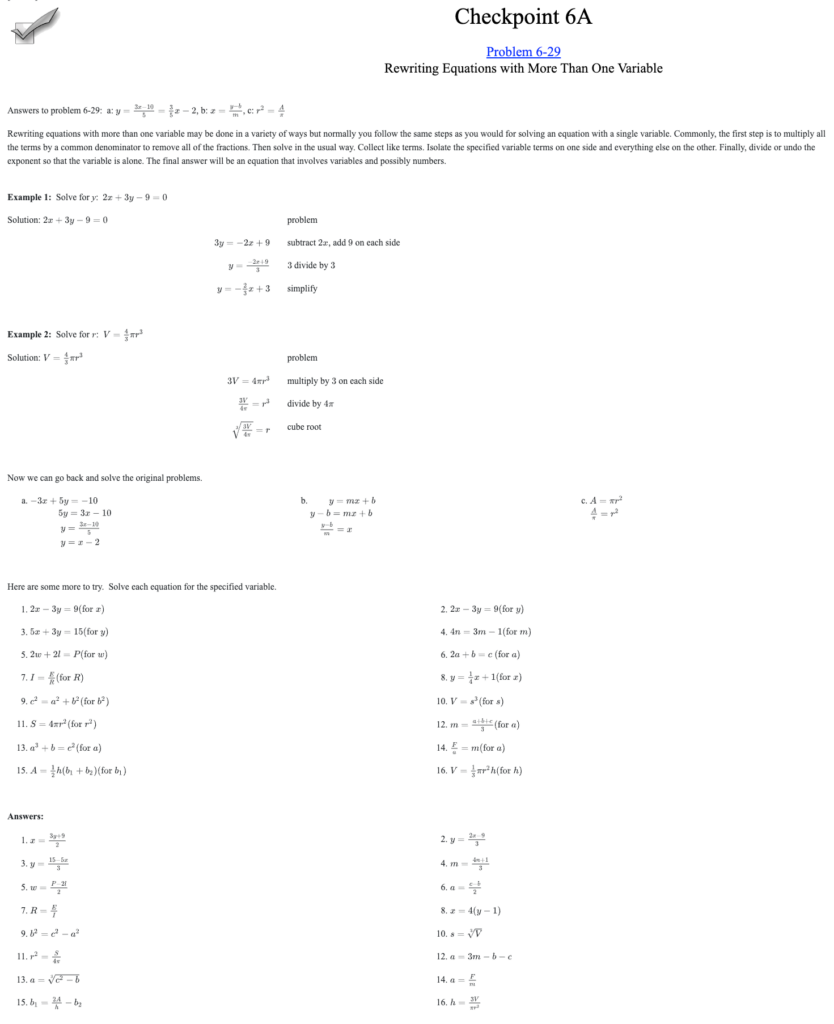Tony Jones, Mahomet, Illinois, trc-anthonyjones@cpm.org
As a high school student, I ran cross-country every fall. As a math teacher at the middle school level, I have continued to be active in cross-country, helping volunteer with our home meets. It is always a wonderful time with the coaches, runners, and parents. However, this past year I have been introduced to a different version of cross-country – cross-country collaboration in mathematics education.
Due to the incredible generosity of CPM, many educators from across the country have been able to participate in amazing professional development opportunities. For those of you who may not know, CPM is one of the very few math curriculum companies that is non-profit. All of the net profits are poured back into research and professional development. Not surprisingly, the best professional development I have been a part of in my 15 years of teaching has involved CPM.
For the past few years, I have been involved in TRC, Teaching Redesign Corp. The focus of TRC is not in redesigning the curriculum, but rather refining our own teaching practices (what we like to call “teacher moves”) that allow students to learn best. Best practices is a buzz word in the world of education. However, how many of the best practices that are touted by experts come with real, live, classroom explorations? TRC is searching to find what really works in classrooms, utilizing teachers who are actively using and documenting the outcomes.
In addition, I was privileged to attend the Academy of Best Practices-Veterans, or ABP-V. ABP-V is an intense week of professional development interacting with both the CPM curriculum and the Study Team Teaching Strategies. ABP was originally designed for teachers with less than five years of experience, teaching with any curriculum. ABP-V was added to include veteran teachers who have had more than five years of experience using the CPM curriculum. I have to admit that this was a great move by CPM! Note: Both of these opportunities are funded completely by CPM.
Throughout both of these experiences, TRC and ABP-V, I have learned so much and added so many new, innovative ideas as staples to my classroom. At TRC, I chose a group that was working to ensure equity and access to all students. We meet once a month (Google Hangout or Zoom) to reflect on our practices, talk about the teacher moves that were successful, and share our ideas. The reflection on my own teaching practices in seeking equity and access for all my students during collaborative teamwork has been incredible. It has completely changed how I approach students in the teams as they work through lessons.
At ABP-V, I met a wonderful group of educators from all over the country. Several of us have an ongoing group text message where we check in regularly. During ABP-V, one of our tasks was to create a movie trailer for one of the chapters in the CPM course we teach. It was a fun, creative and wonderful time as we created and then shared these with each other. That idea sparked in me the desire to create one for each chapter I teach throughout the year. I show the trailer at the opening of each chapter to get students intrigued about what is coming. I then re-visit the trailer during closure, where the students try to recognize the images and events that they experienced during the chapter. My students absolutely love these. In fact, now when we begin a new chapter, I have students walk into the room asking about it.
After I posted the following trailer on the CPM Facebook page, I have had several people ask if I would share them. I am more than glad to share resources with anyone. I believe collaboration is one of the main tenets of CPM, and has been an incredible part of my growth as an educator.
However, beyond the creativity and the excellent ideas from these experiences, it has been the connection to educators across the country and the subsequent relationships that have developed that are invaluable. Through CPM, I have made connections with educators from Wyoming to Kentucky, from California to Wisconsin, from Ohio to Florida. Recently, I received a message from someone in Lagos, Nigeria! I have been able to collaborate and share ideas with people from all over the country and all over the world. I literally have been involved in PD and mentoring across the country throughout the school year. All of these connections are a result of CPM providing (and provoking) me with opportunities.
One of the connections I made at TRC was with a veteran teacher who started a new position this fall. She had never taught Core Connections, Course 2. Throughout this first semester, we messaged each other, and I have been able to mentor and collaborate with her about implementation of Core Connections, Course 2. The text-discussion focused on specific lessons or concepts where her students are struggling. We have both reflected, shared, and changed some of what we do in the classroom through this collaboration.
Another connection was with a teacher in Wyoming who was having difficulty convincing her colleagues to allow re-takes of assessments. The policy they had developed was rigid and perhaps not necessarily in the best interest of students. During one of our monthly meetings, we all shared our own policies and gave some ideas to help this educator.
I am continually amazed at how much I have collaborated, shared resources, and been challenged by these amazing educators from all over the country. We have set up Google drives and shared resources with each other. We regularly write reflections and then read each others’ reflections and add comments, and we have even sent private messages to encourage each other on days when things do not go as planned. And all of this was through the thoughtfulness and generosity of CPM.
As a final note, I would encourage every educator to consider being a part of the great opportunities that CPM offers. From meeting some amazingly creative educators, to being challenged to consider how we might best serve ours students, to getting to meet and learn from some of the best math minds available – be it Eli Luberoff or Dan Meyer, Tom Sallee or Judy Kysh, Mark Coté or Sharon Rendon – it is worth the time and effort to be a part of these great events.


